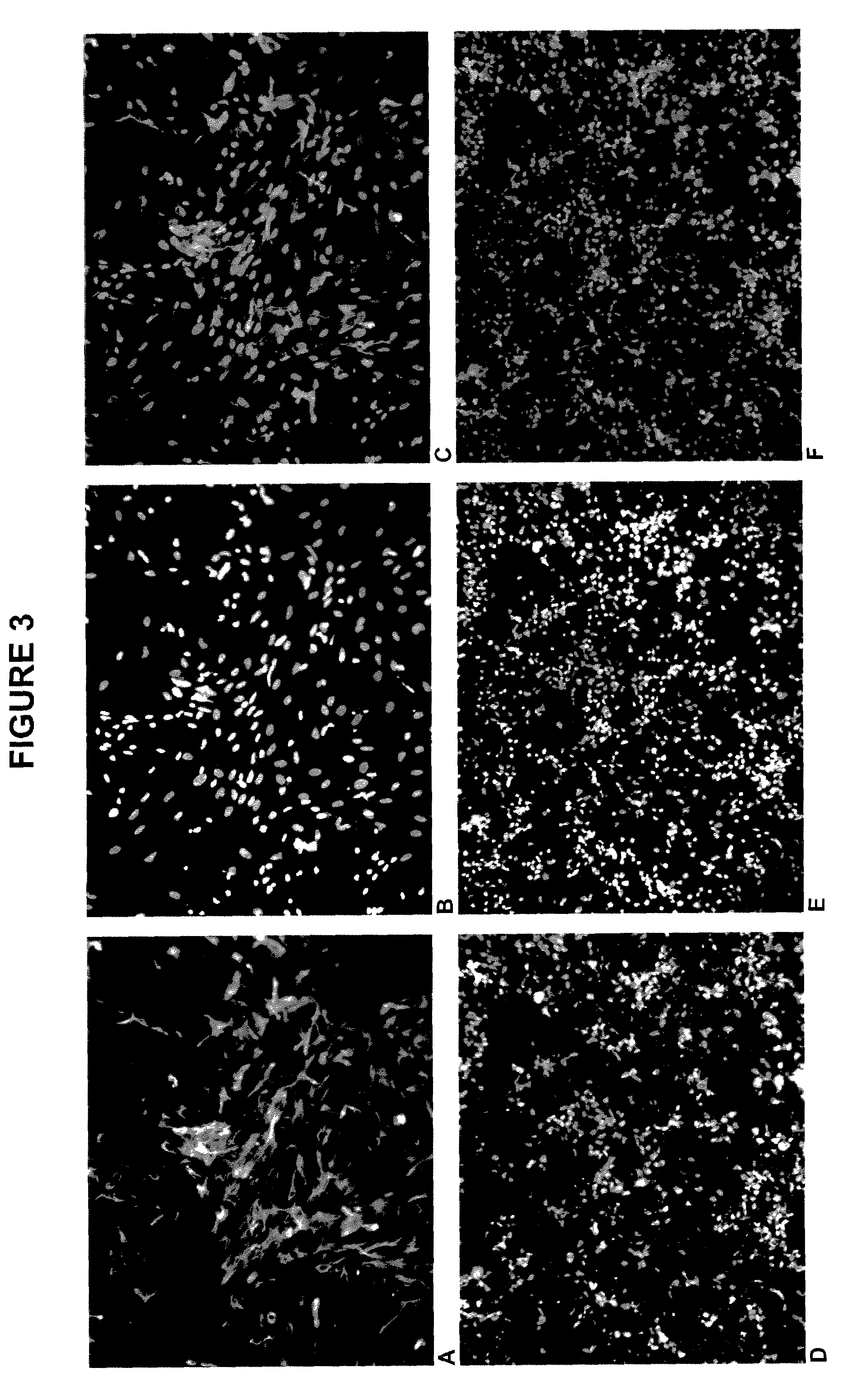Methods of derivation of neuronal progenitor cells from embryonic stem cells
a technology of embryonic stem cells and neuronal progenitor cells, which is applied in the field of neuronal progenitor cells, can solve the problems of less therapeutic potential, methods that fail to meet one or more conditions required of human therapy, and difficult and inefficient in vitro manipulation of mature neurons, so as to minimize leakage or loss, maintain sterility, and the effect of viability
- Summary
- Abstract
- Description
- Claims
- Application Information
AI Technical Summary
Benefits of technology
Problems solved by technology
Method used
Image
Examples
example 1
This example includes a description of embryonic stem cell differentiation and characterization.
[0112]Human embryonic stem cells were expanded using media and substrates previously described in 150 cm square culture flasks. The initiation of differentiation was performed by replacing the stem cell media with the chemically defined media with the following content: DMEM:F12-480 ml; B27 supplement—10 ml; Insulin—Transferrin—Selenite supplement—5 ml; Magnesium chloride 0.5M -0.5 ml; Glutamax 5 ml; and FGF 5 ng / ml added at cell feeding.
[0113]In the second day of differentiation, retinoic acid dissolved in dimethylsulfoxyde was added at a concentration of 10 μM. The media was replaced daily.
[0114]At day 7 of differentiation the culture was dissociated with tripsyn-EDTA 0.25% for 3 minutes followed by treatment with trypsin inhibitor and two washes by centrifugation and resuspension in nutritive media. The final cellular suspension was transferred in ultra-low binding 6-well plates (Corni...
example 2
This Example includes a description of high-throughput screening plates using neuronal progenitor cells.
[0133]In this example cells were seeded into 96-well and 384-well plates and retained viability when shipped worldwide. Cells in this format remained viable for up to 1 week after shipping at the end user, which allowed various studies (e.g., drug screening) and automated imaging. This system is a ready to use, assay-ready screening plate seeded with high-purity human cells derived from any stem cell type.
[0134]Human embryonic stem cell (hESC) cultures were allowed to differentiate into neuronal progenitors (NPs) as described above. Briefly, hESCs are expanded on Matrigel (BD Biosciences, San Jose, Calif.) for 1-3 weeks in EctoBias™ media (California Stem Cell, Inc.) supplemented with basic fibroblast growth factor (bFGF), which causes an ectodermal-biased differentiation. Cells are then removed from the adherent substrate, transferred to ultra-low binding 75 cm2 or 225 cm2 or 630...
example 3
This Example includes a description of seeding and maturation in microtiter plates, phenotype analysis and the effect of shipment on viability.
[0136]At day 22, the cultures were enzymatically dissociated, quantified for total cell number and viability and resuspended for a density of 1,000,000 cells / ml. This cell suspension was further diluted in 100,000 cells / ml increments. Different densities of human neuronal progenitors were then plated into 96-well plates for a total of 200 ul / well containing one of the following substrates: poly-D-lysine, poly-D-lysine-laminin or Matrigel and left in incubator overnight to allow for proper adherence.
[0137]For a 96-well format, the optimal density was found in the range of 20,000-40,000 cells per well in 200 μL of neuronal media. Cells were fed next day by withdrawing 100 μL of media and replacing with fresh neuronal media. Cells were left for one to several (3-5) days to fully adhere and reach a stable mature morphological phenotype. Following...
PUM
| Property | Measurement | Unit |
|---|---|---|
| temperature | aaaaa | aaaaa |
| temperature | aaaaa | aaaaa |
| concentration | aaaaa | aaaaa |
Abstract
Description
Claims
Application Information
 Login to View More
Login to View More - R&D
- Intellectual Property
- Life Sciences
- Materials
- Tech Scout
- Unparalleled Data Quality
- Higher Quality Content
- 60% Fewer Hallucinations
Browse by: Latest US Patents, China's latest patents, Technical Efficacy Thesaurus, Application Domain, Technology Topic, Popular Technical Reports.
© 2025 PatSnap. All rights reserved.Legal|Privacy policy|Modern Slavery Act Transparency Statement|Sitemap|About US| Contact US: help@patsnap.com



